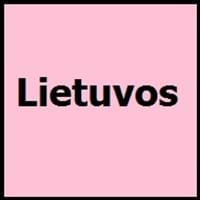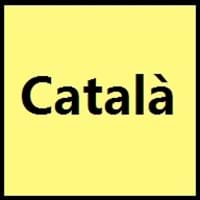Countries
European Union, Lithuania
Andorra, Balearic Islands, Catalonia, Latin Union, Spain, Valencian Community
National Language
Lithuania
Andorra, France, Italy, Spain
Second Language
Not spoken in any of the countries
Spain
Speaking Continents
Europe
Europe
Minority Language
Poland
Aragon, France, Italy, Spain
Regulated By
Commission of the Lithuanian Language
Institut d'Estudis Catalans, Acadèmia Valenciana de la Llengua, National Languages Committee
Interesting Facts
- Lithuanian has many loanwords that originate from Slavic, Germanic and other Baltic languages.
- "Catheciusmus" is the oldest known book in Lithuanian language in 1547.
- Catalan is 6th most largely spoken Romance language.
- Catalan went through a golden age in low middle ages, reaching a peak of maturity and cultural richness.
Similar To
Latvian
Spanish Language, Occitan Language, Italian Language, French Language
Derived From
Not Available
Latin
Alphabets in
Lithuanian-Alpahbets.jpg#200
Catalan-Alpahabets.jpg#200
Writing Direction
Left-To-Right, Horizontal
Left-To-Right, Horizontal
How Are You?
Kaip sekasi?
Com estàs?
Good Night
Labanakt
Bona nit
Good Evening
Labas vakaras
Bona nit
Good Afternoon
Laba diena
Bona tarda
Good Morning
Labas rytas
Bon dia
I Love You
Aš myliu tave
T'estimo
Excuse Me
Atsiprašau
Dispensi!
Dialect 1
Samogitian
Caló
Where They Speak
Lithuania
France, Portugal, Spain
Dialect 2
Aukštaitian
Valencian
Where They Speak
Lithuania
Spain
How Many People Speak
Not Available
Dialect 3
Curonian
Ribagorçan
Where They Speak
Lithuania
Spain
Speaking Population
Not Available
Not Available
Second Language Speakers
Not Available
Native Name
lietuvių kalba
català
Alternative Names
Lietuvi, Lietuviskai, Litauische, Litewski, Litovskiy
Català, Catalán, Catalan-Valencian-Balear, Catalonian, Valencian
French Name
lituanien
catalan; valencien
German Name
Litauisch
Katalanisch
Pronunciation
Not Available
[kətəˈɫa] (EC) ~ [kataˈɫa] (WC)
Ethnicity
Lithuanians
Catalan people
Language Family
Indo-European Family
Indo-European Family
Subgroup
Not Available
Romance
Branch
Baltic
Not Available
Early Forms
No early forms
Old Catalan
Standard Forms
Lithuanian
Standard Catalan, Standard Valencian
Signed Forms
Lithuanian Sign Language
Signed Catalan
Scope
Individual
Individual
ISO 639 6
Not Available
Not Available
Glottocode
lith1251
stan1289
Linguasphere
54-AAA-a
51-AAA-e
Language Type
Living
Living
Language Linguistic Typology
Not Available
Subject-Verb-Object
Language Morphological Typology
Synthetic
Not Available
All Lithuanian and Catalan Dialects
Most languages have dialects where each dialect differ from other dialect with respect to grammar and vocabulary. Here you will get to know all Lithuanian and Catalan dialects. Various dialects of Lithuanian and Catalan language differ in their pronunciations and words. Dialects of Lithuanian are spoken in different Lithuanian Speaking Countries whereas Catalan Dialects are spoken in different Catalan speaking countries. Also the number of people speaking Lithuanian vs Catalan Dialects varies from few thousands to many millions. Some of the Lithuanian dialects include: Samogitian, Aukštaitian. Catalan dialects include: Caló , Valencian. Also learn about dialects in South American Languages and North American Languages.
Lithuanian and Catalan Speaking population
Lithuanian and Catalan speaking population is one of the factors based on which Lithuanian and Catalan languages can be compared. The total count of Lithuanian and Catalan Speaking population in percentage is also given. The percentage of people speaking Lithuanian language is Not Available whereas the percentage of people speaking Catalan language is Not Available. When we compare the speaking population of any two languages we get to know which of two languages is more popular. Find more details about how many people speak Lithuanian and Catalan on Lithuanian vs Catalan where you will get native speakers, speaking population in percentage and native names.
Lithuanian and Catalan Language Codes
Lithuanian and Catalan language codes are used in those applications where using language names are tedious. Lithuanian and Catalan Language Codes include all the international language codes, glottocodes and linguasphere.





